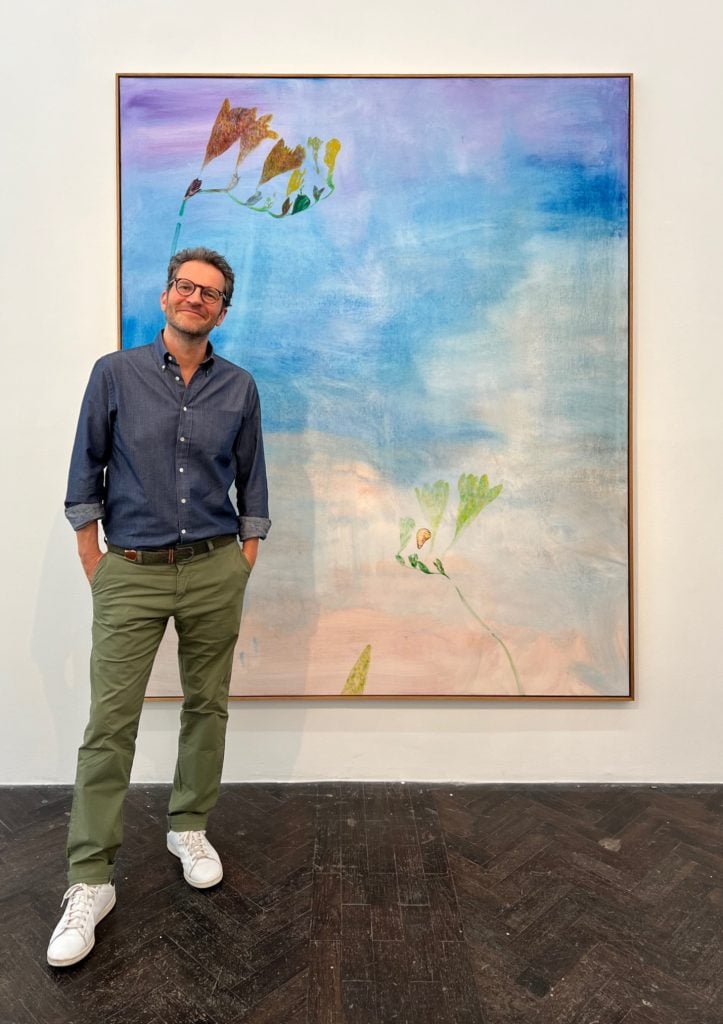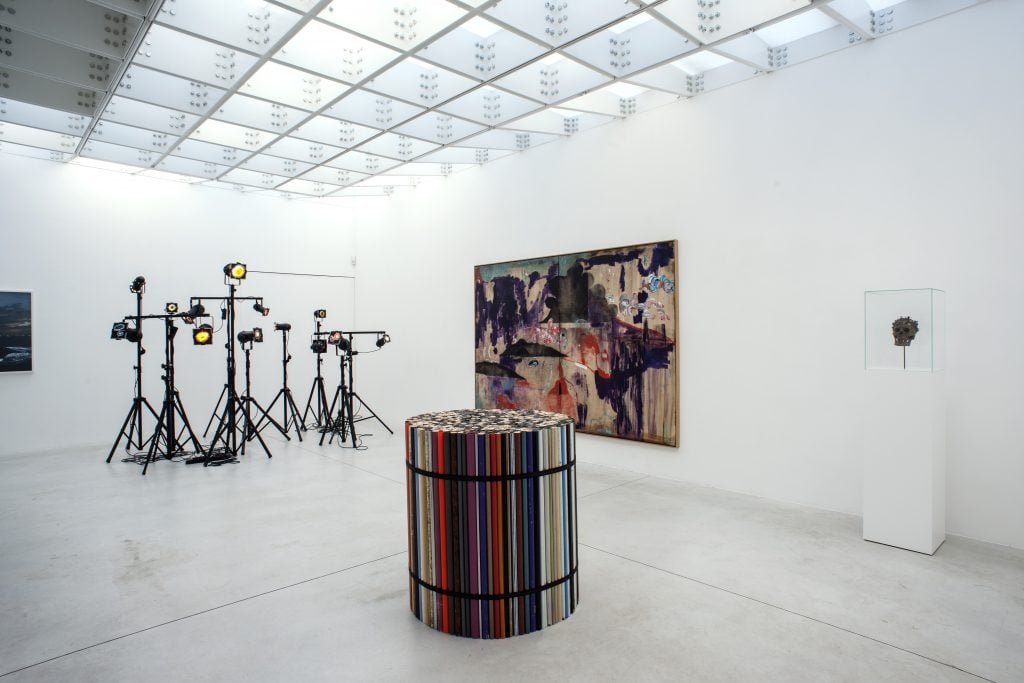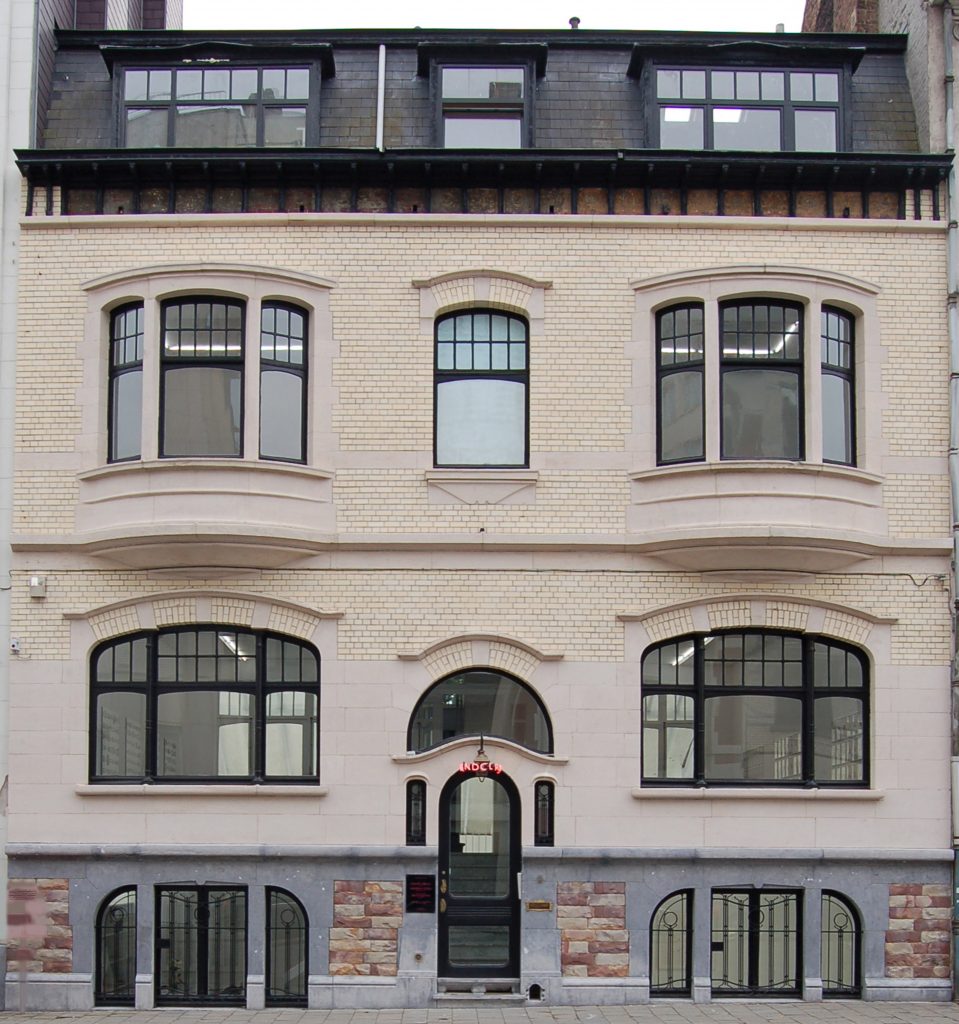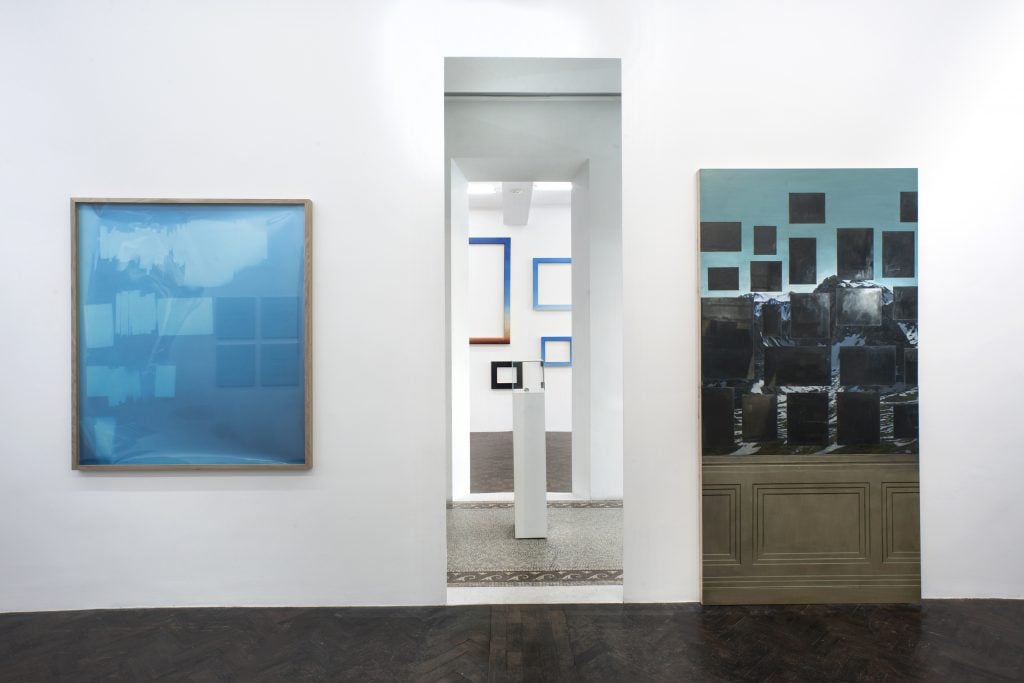Artnet News Pro
‘I Always Need to Unlearn Something’: Gallerist Olivier Meessen on the Challenges Facing the Middle Market
The gallerist opens up about doing business in Brussels, and what’s holding the city back from greatness.

The gallerist opens up about doing business in Brussels, and what’s holding the city back from greatness.

What makes Brussels one of the most underappreciated art capitals in the world?
People say that Belgium has the most collectors per capita than anywhere else. It has been a stomping ground for artists throughout history and is ideally located for cultural tourists travelling from around Europe. At the same time, the country is undergoing a long process of healing from its colonial past, and while its capital is one of Europe’s most multi-national cities, it faces problems associated with urbanization and social integration, which are all the more difficult to navigate amid a complex political situation and lack of centralized government.
Still, over the past few decades, it has become a bastion of influential galleries and a rich contemporary art scene that has attracted international colleagues to expand to get a foothold in the milieu. But unlike other major European cities, where mega-galleries lead the charge, the scene in Brussels is driven by a cohort of small to mid-sized galleries.
Artnet News caught up with Olivier Meessen, co-founder of local powerhouse gallery Meessen De Clercq about what makes the city’s art scene tick. The former art historian-turned-dealer shared how he and partner Jan De Clercq have steered their Brussels gallery amid rising competition since 2008, plus his ideas on what more can be done, and willingly holding onto the “naïve perception” that art must be freed from its “hermetic” bubble, to open doors and minds.

Installation view, “The Unending Gift,” 2018. Courtesy of the artists and Meessen De Clercq, Brussels.
What is unique about the Brussels scene?
It’s a cliché, but it’s true: Brussels is a small city—because it only has about 1.1 million inhabitants—but it has the offer of a big capital. It’s quite impressive.
The city’s advantage is that it also maintains its human scale. It’s centrally located in Europe, and the quality of life is quite high. There is also a strong history of artistic movements, going back to the 19th century and earlier, with Flemish painters. Plus, some good institutions, galleries, and very good collectors. Being the administrative capital of Europe also plays in the favor of Brussels. Now, in the U.S., people actually know where Brussels is.
Is Brussels underappreciated as an art capital?
I think that in Europe it’s pretty well-considered, even if it could improve a lot. It’s true that something has happened in the last 10 years here, with a lot of foreign galleries opening spaces, and other non-profit platforms.
But let’s be honest: Brussels is not London or Paris. Now Paris is getting stronger, with the collections of Pinault, Arnault, and Paris + by Art Basel, so it’s a different scale. But that is also one of Brussels’ qualities: the fact that it’s not London. You can walk and talk with people, there are good restaurants. The Other—with a capital “O”—is welcome. There is no pretension as a country, no national pride.
Where is there room to do better?
We have a lack of [political] visionaries. It’s difficult to build something in a short time, and everybody is scared. If you have power, you don’t want to make hard decisions, because you don’t know if you’ll keep your job.
For me, as a gallerist, there is also a similar issue. I did a show in 2015 about the Anthropocene [the period when humans began impacting the Earth]. But I would like to make other exhibitions about current topics, and some of them could be very difficult for me to do, because in the end I need to be able to sell works to be able to continue. Even if we can take some risks, we have some limits as a gallery.
There is also still a lack of cultural institutions for contemporary art, even if Wiels [the art center] filled a gap 10 years ago. I don’t know why we don’t have a European-funded Kunsthalle explaining where we come from, where we are, and where we are going… To talk about all the important topics of migration, climate change, etc… To understand what the European project is about. Because we’re facing a crisis now, and it’s not clear where we’re headed, with the question of borders, and so on. I think there is still something to be done that couldn’t exist in any other city, because Brussels is at the heart of Europe.
Is the political situation you described holding it back?
It’s politically chaotic here. You don’t have a single source of financing for cultural places. We have different governments—it’s completely crazy. If you consider the scale of the country, and how many different ministers we have (one for each language community: Dutch, French, German) I’m ashamed. We don’t understand it, and a lot of people are angry.

The gallery, courtesy Meessen De Clercq.
Is the idea for a European Kunsthalle to talk about the current topics you mentioned through contemporary art? Or a more historical museum?
You need curators to talk about all these topics through the contemporary art lens, so the project is not too didactic, or historical, because then you have problems with politicians [because they will disagree on how that history is taught].
For some people it will be hard to understand, but it’s a journey. We have to exercise the eye muscles of the public, to try to give more references, and educate without talking down to people. We have to empower everyone, and that’s what I try to do in the gallery, in a way. To give people confidence in themselves.
I wanted to ask if that was part of your gallery’s message.
So many say, “I don’t know anything about contemporary art,” but I say “no, you have your eye.” You might need more references, but your eye is also important. If you feel something, that’s already a nice beginning. It’s not as if I know, and you don’t. That’s bullshit.
That’s why I have a small text in the gallery that doesn’t explain, but gives some keys, in a language that you can read. I’m an art historian, but I’m fed up with [curatorial] texts that you can’t understand. That’s someone who is just writing for themselves, name-dropping, etc… I don’t like this idea of superiority, of pretension.
We have to be respectful but also honest, and to have a little bit of humility, because contemporary art is super hermetic for a lot of people. True, we can’t simplify everything, but the idea is to welcome people, not reject them.
Does your gallery aim to change perceptions on the issues you mentioned, such as migration, and climate change?
It’s so tiny, it might seem ridiculous for some people, but I always felt that small changes begin in the street, with people who talk with each other. And that real revolutions always started in the street, not the top floor of the building. It’s very naïve, but I want to keep this naïve perception. It’s always good to try giving some new ways of thinking. Just to open a door.
I try to contribute like in a relay race. Handing over the baton—that’s my role. The first person is the artist, and I try to take the baton and to give it to someone else. That’s how I see my profession.

Installation view, “The Unending Gift,” 2018. Courtesy of the artists and Meessen De Clercq, Brussels.
What are the keys to a successful gallery operation in the city?
The location of the gallery is very important [in the city center, if unknown in the city] and of course a good program and a vision.
We also feel that the art world, and the galleries have changed: either you have a very tiny structure or a very big one. If you’re in between—I’m in between—it’s different. You have to constantly adapt.
If you discover an artist, you have to bring them up to another level. But it’s true that now, huge galleries need more artists. I remember when I began, huge galleries represented maybe 40 artists. Now, I think it’s 100. Personally, I try to have a strong relationship with my artists, and if you can do that—and a lot of Belgian galleries succeed at that—you can keep your artist, even if fame arrives.
A huge gallery wouldn’t be logical in Brussels now.
Why not?
Because Belgian collectors travel a lot, and go easily to London, Paris or to NY, and they like to buy the same artists there. Also, there’s the (smaller scale) structure of the city, even though now you have big spaces. The human scale is important. Xavier Hufkens is the only huge one, because this is his town.
How many artists do you represent?
A little less than 20. And I would like to have more female artists in the coming months. I am completely aware that for the moment there are too many male artists in the gallery. I want to change that. You’ll see that probably in the next 18 months.
Other than Xavier Hufkens, Brussels has more of an eclectic mix of smaller/mid-sized galleries?
It’s a good mix. Except Xavier Hufkens and Almine Rech, and Rodolphe Janssen has two spaces, there are no huge, mega-spaces like in London. It’s true that CLEARING has a very large space, that is quite impressive. You have important players at every level, but it’s not like they want to have the biggest or greatest space.
Have you considered expanding outside Brussels?
We considered expanding a while ago, but not after Covid times, and what we’re facing now, with the general threat, let’s say. I like this idea of something more nomadic, or a different [model], to try to build something intellectually stimulating with other people from other countries. It exists, but we learned a lot from Covid times, so it wouldn’t be a regular gallery.
We also suffer from one single perspective in Europe, and we have to understand the world from other points of view. I’m a European, almost 50, white, hetero. I have a lot to learn and unlearn. I always need intellectual stimulation, to meet people, to unlearn something. It’s essential for me.
Have you been doing fewer fairs since Covid?
Covid was the main reason for doing fewer fairs. I also wrote a new ethical charter for ourselves, artists, and even clients … We do things now that we didn’t before, for production, storage, transport [in terms of our attention to the environment]. We don’t travel as much. For the moment it’s OK, for now everyone understands that, all the artists, but I’m not sure about the long term.
Can you share your approach to holding onto artists, as large galleries suck them up at faster rates?
I think talking [to the artist] is essential. It is crucial, but I’m sure that in my career it will happen. Where you worked hard for or with somebody, and then at a certain point they have to choose. It’s life. We know that, and we are going to adapt. You can keep your artists if you’re honest with them.
That’s why in the ethical charter I talk about what happens if someone comes to you and offers you a large amount of money in return for dropping all your other galleries. I want to evoke this with each artist, because it will happen. For sure.
They are like whales, and they have to feed the whale with more and more artists. But it’s ok for me, because I don’t want to live with that point of view. I need to trust people, and make real projects and feel like a standing human being. And to say, “we try to make good things, and it’s not about money.” Of course we need to sell, but it’s not my ultimate target, it’s more to create a fictional story with people, and at the end to be able to say: It was a nice story.